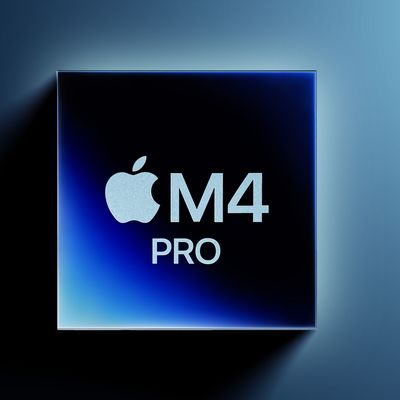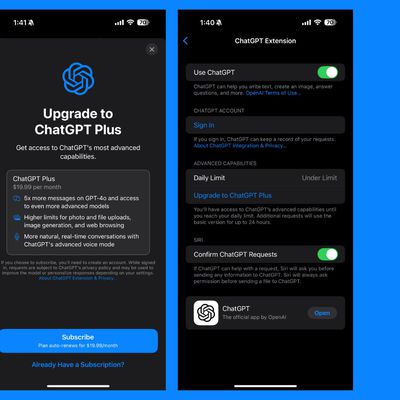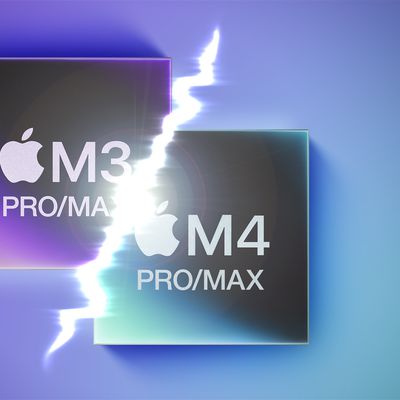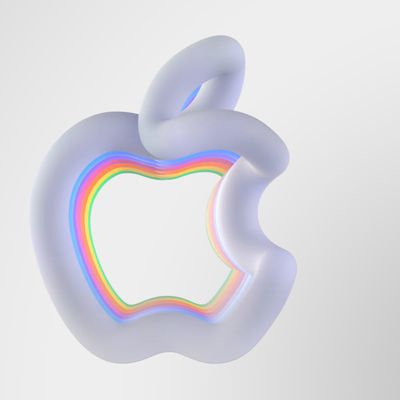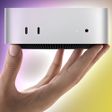Apple today announced the iPhone 14 Pro and iPhone 14 Pro Max, featuring the "Dynamic Island" to surface alerts and activity in a new way, a brighter display with always-on functionality, the A16 Bionic chip, a more advanced camera system, new color options, and more.
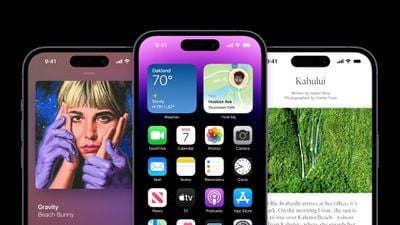
The iPhone 14 Pro and iPhone 14 Pro Max offer the "Dynamic Island" thanks to a redesigned TrueDepth camera array that takes up less space and software integrations across the system. The Dynamic Island adapts and expands into different shapes in real time to show important alerts, notifications and activities across Maps, Music, timers, Live Activities, battery levels, Face ID, and more. It also maintains an active state to give users easier access to controls with a simple tap-and-hold gesture.
An improved Super Retina XDR display is up to two times brighter than that of the iPhone 13 Pro with 2,000 nits of brightness. It features always-on functionality for the first time. The display can drop to a 1Hz refresh rate, showing iOS 16's redesigned Lock Screen at all times to show the time, widgets, and Live Activities at a glance.
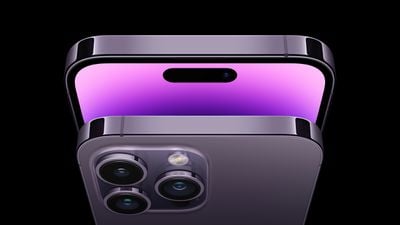
The A16 chip is the first Apple chip built on a 4nm process, featuring 16 billion transistors. With two high-performance cores and four high-efficiency cores, Apple says that the new 6-core CPU easily handles demanding workloads. The chip features an accelerated 5-core GPU with 50 percent more memory bandwidth and a new 16-core Neural Engine.
A16 Bionic powers computational photography features on the iPhone 14 Pro and supports the pro camera system. According to Apple, the CPU, GPU, Neural Engine, and image signal processor work together to support the new camera hardware and perform up to four trillion operations per photo. The A16 supports the Photonic Engine to apply Deep Fusion earlier in the imaging process and improve low-light performance across all of the device's cameras, as well as Action Mode to stabilize video more smoothly. Action mode is also now available in 4K at 24 fps and 30 fps.
The rear camera system features a 48-megapixel Wide camera with a 65 percent larger, quad-pixel sensor and second-generation sensor-shift optical image stabilization. For most photos, the quad-pixel sensor combines every four pixels into one large quad pixel equivalent to 2.44 µm, resulting in enhanced low-light capture and 12MP photo sizes. The sensor is optimized for ProRAW.
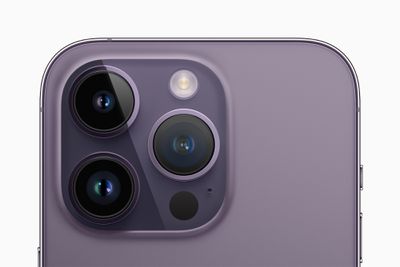
The 48-megapixel Wide camera also delivers a new 2x telephoto view, in addition to the 3x from the true Telephoto camera, that can also record 4K video with no digital zoom. The Ultra Wide camera is also improved. A new adaptive rear flash features nine LEDs and is up to twice as bright with up to three times better uniformity.
The iPhone 14 Pro also features an improved front-facing camera with an ƒ/1.9 aperture and autofocus, a new dual-core accelerometer with Crash Detection, and Emergency SOS using satellite connectivity. Emergency SOS via satellite allows users to connect directly to a satellite when they cannot get cellular signal, enabling messaging with emergency services. Users can manually share their location over satellite with Find My when there is no cellular or Wi-Fi connection.
The iPhone 14 Pro continues to deliver "all-day battery life." The new devices are available in new color options, including Space Black and Deep Purple, alongside Silver and Gold. The iPhone 14 Pro and iPhone 14 Pro Max remove the SIM tray for U.S. models, with eSIM being the only option.
The iPhone 14 Pro and iPhone 14 Pro Max continue to be priced at $999 and $1,099, respectively. Pre-orders begin on Friday, September 9, with availability beginning Friday, September 16.




